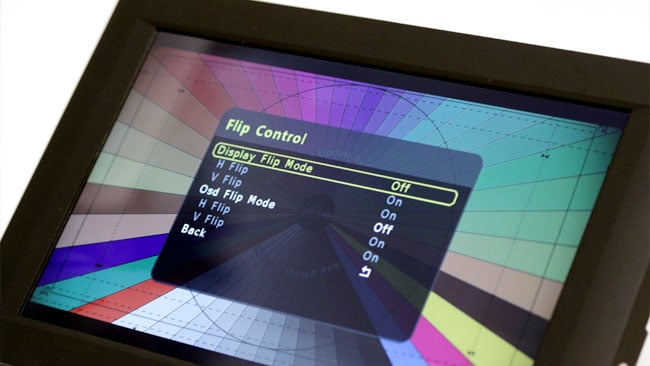
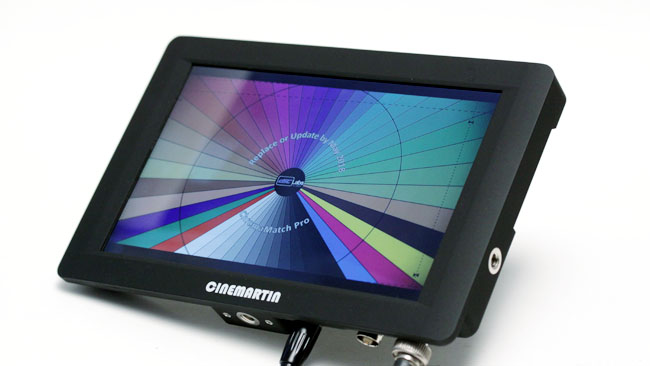
RedShark Review: Cinemartin's new 1000 nit monitor has the sort of price and performance ratio that means it will be talked about long after memories of August's actual eclipse fade.
It would be easy to see monitoring, especially portable monitoring, as a largely mature technology. There's certainly room for fundamental improvement of the very highest-grade displays, where OLED can sometimes struggle for brightness and LCDs struggle for contrast. In terms of on-camera monitoring, though, the enormous amount of development poured into display panels for phones and tablets, as well as the relative ease with which we can now develop very capable electronics to drive them, has led to a sort of post-scarcity world. Resolution, certainly, is not really a problem anymore. Cinemartin's Eclipse monitor, however, addresses a need that's often overlooked – sheer brightness.
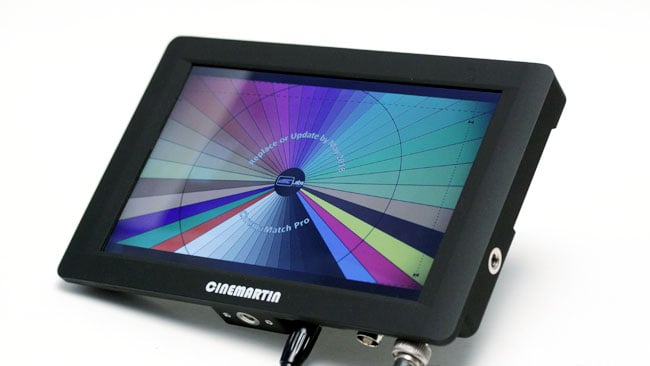
This matters because there's not much point in a monitor we can't see because the ambient light is too bright. At 1000 nits, the Eclipse offers perhaps the most photons for the money of any currently available monitor. There are brighter things, with at least one monitor-recorder offering 1500 nits brightness, but that's less than a stop more and many times the money. Moreover, the backlight on the Eclipse is solid and even. Many high-brightness displays have suffered rather poor uniformity, perhaps because the high brightness backlight tends to exacerbate any issues with the panel and diffusing layers, especially in a portable device designed to be small and light. Cinemartin has done a very good job in ensuring that the Eclipse doesn't suffer from any patchiness.
Brightness is everything
The brightness, then, is the headline feature and differentiates the Eclipse from a very large field of displays in the 7-inch range. There are also a couple of other things which make it interesting — perhaps chiefly the size and weight. The Eclipse is, to put it mildly, a very slim-line device that, without batteries, weighs about as much as — well — a battery. This will greatly endear it to DSLR people who often have to make do with a slightly ungainly cold-shoe mount which places the weight of the monitor well above the camera's centre of gravity and makes handheld operation tricky. A lightweight display is crucial here. OK, in that situation, it's likely that a monitor would need an onboard battery, but even then, the Eclipse is going to be a lot lighter than many other options.
![]()
That vertical line of pixels in the middle of the image is the edge of a Cinemartin Eclipse monitor
It's also barely 20mm thick without battery plates, which is a particularly nice characteristic to find in a display which has full-sized BNC connectors for SDI and HDMI connectors as well. The connectors route sensibly out of the bottom edge, although, as we'll see, the monitor offers geometry options which would also make it feasible to mount the display upside down, with the cables at the top. The case is plastic, which is an inevitable consequence of both price and the weight-saving initiative. There are female 1/4-20 screw threads on all four sides and a handy intermediate-plate system is compatible with different battery types. Only types compatible with Canon LP-E6-type batteries were supplied, but the system appears identical to the company's 7” Loyal monitor, for which there have long been plates compatible with Sony L-series batteries as well.
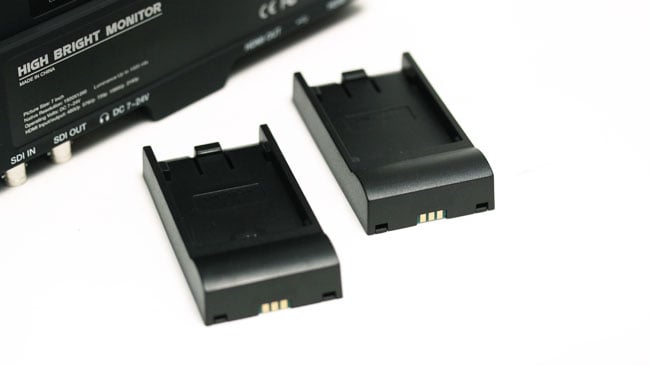
The interchangeable battery plate system means you can use either Canon or Sony batteries
Electronically, the Eclipse is well specified if we overlook the lack of a waveform monitor. Drawing a waveform display is much harder work, mathematically, than many other types of test and measurement instrumentation, and it is commonly omitted from more cost-conscious products. That's entirely understandable and the company has 7-inch displays with waveform if that's required. Otherwise, the image-flip features, in particular, include the option to invert and mirror the image but not the user interface, accommodating situations where the camera is inverted (as is common, say, for stereo 3D) but the display is not. This is a feature, or at least a combination of features, which has been conspicuously absent from the more affordable part of the monitor market and is very welcome, despite its relative simplicity.
UHD capabilities
One of the most crucial features of the Eclipse is that it can monitor UHD signals, which is increasingly necessary and rare in moderately-priced monitors. That's not to say that the display panel is anywhere near 3800 pixels across. It's a 1920x1200 panel, which is already at or beyond the limit of what most humans can see in terms of sheer pixels per inch. If there were any such thing as a UHD, seven-inch LCD panel, it would be more or less pointless unless viewers wore a jeweller's loupe. What the Eclipse can do is to scale UHD images to fit its HD display, complete, of course, with a pixel-for-pixel zoom mode. Even when monitoring HD images, there's a zoom mode to ensure a camera assistant can actually see critical focus, but the one-to-one display of UHD material is even more crucial. The zoom, in both cases, is centred in the frame and there is no way to move it around.
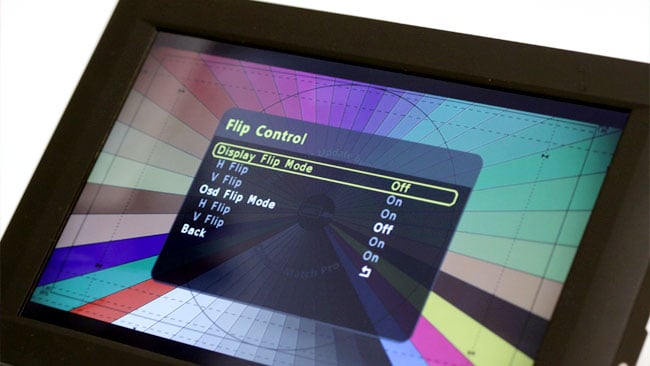
The processing options are very complete - the flip and scale setup is particularly good
A final bit of attention to detail involves the input detection electronics. Zoom and crop features intended to work with DSLRs are active only when the HDMI input is in use, avoiding an unnecessary clutter of the menus with things that aren't going to be useful with SDI-equipped cameras. Otherwise, there are conventional test and measurement displays, including false colour, focus peaking and a “detail” adjustment which applies lots of high-frequency enhancement and may also be useful as a focus aid. The monitor offers several predefined anamorphic settings as well as variable stretch and compression.
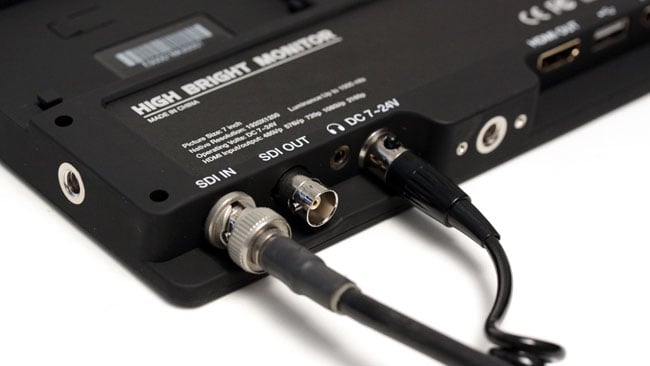
The monitor is so slim it's barely deep enough to accommodate the SDI inputs - and the locking power connector
The Eclipse is not a precision reference display or an HDR display and makes no pretence of being one. It is approximately a Rec.709 monitor designed for outdoor viewing, including in strong sunlight. These are circumstances which make a mockery of attempts to provide particularly accurate monitoring, hence the blacked-out gazebo favoured by digital imaging technicians. Precision reference is not the purpose, here. This is an AC's monitor, or possibly one to give to a director on a radio link, especially given the very light weight. The interchangeable battery mounts are excellent and — finally — there's a locking power connector (Freude! Schoner, Gotterfunken! Tochter aus Elysium!)
If you're in the market, this deserves a very close look because it gets so many things right. It is extremely slim and lightweight, it handles UHD signals and the headline high brightness feature is well implemented. It's even quite pretty, enjoying an attractive matte finish which looks more expensive than it is. For that matter, the pictures look more expensive than they are, too, which is what we're all aiming for at some level.
Tags: Production


Comments